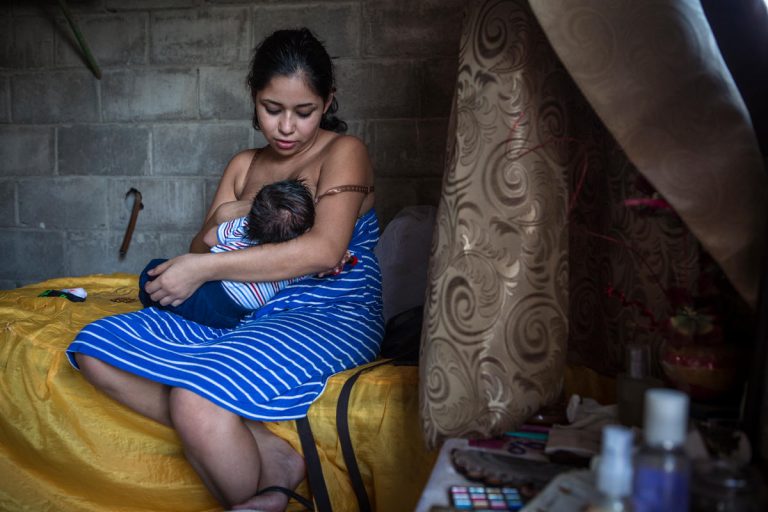Blog adapted from a comment in The Lancet Global Health here
This comment is in response to a journal article published in The Lancet Global Health here.
Early initiation of and exclusive and continued breastfeeding are among the most effective interventions to reduce infant and child morbidity and mortality. These interventions also improve early childhood development and reduce the risks of childhood obesity and non-communicable diseases: health outcomes desired by parents everywhere for their children. However, rates of exclusive breastfeeding in most regions have increased only marginally in the past 20 years. Yes, some women do have difficulty with attachment and positioning; others choose to give replacement feeds because they need or want to return to work or school, or because they prefer to do so; and marketing by industry to normalise breastmilk substitutes undermines the exceptionality of breastmilk and erodes mothers’ confidence in and community support for breastfeeding. The low bar set by the Global Nutrition Targets is perhaps surprising, namely to increase exclusive breastfeeding to 50% by 2025—and even this might not be achieved.
With this background, Jenny A Cresswell and colleagues show in The Lancet Global Health the results of their cluster-randomised assessment of the Alive & Thrive initiative, designed to improve breastfeeding practices in a rural, low-education setting with high continued, but low exclusive breastfeeding rates. The interventions were, from the outset, designed to be implemented at scale. These included quality training and data-informed supervision of both facility-based and community health workers and community mobilisation to provide key messages to mothers and create an effective continuum of support between facilities and communities. While non-governmental organisations delivered the training and coordinated the community activities, routine health personnel provided the direct support to pregnant women and mothers. The intervention was delivered over a period of about 12–14 months, with the endline survey showing a risk difference of 38·9% (95% CI 32·2–45·6, p<0·001) between the reported prevalence of exclusive breastfeeding in the intervention group and that of the control group. The intervention also resulted in meaningful changes in the knowledge and beliefs of mothers concerning breastfeeding and improved rates of early initiation (risk difference 22·7%, 95% CI 14·6–30·8; p<0·001 between intervention and control group).
The study by Cresswell and colleagues adds to the evidence base that multidimensional support can improve breastfeeding practices. Although this has been repeatedly shown before, the Alive & Thrive intervention achieved these results at scale and over a short period of time. The initiative addressed the multiple influences that can affect a mother’s confidence and ability to optimally breastfeed, and it used different communication approaches to reach the individuals and communities who either enable or impede a mother’s decision to breastfeed. The interventions were coordinated in a manner that could be replicated in any rural district health system with appropriate resources. The project counters the common perception that changing the environment to support mothers and improve rates of breastfeeding, especially exclusive breastfeeding, requires years of intervention and major social change.
However, Cresswell and colleagues did not share the costs related to implementation; it is likely to have required substantial funds. National policy makers and local programme implementers need this information to understand resource requirements and to build these costs into district plans. Yet, institutions budgeting for such interventions need to recognise the multiple benefits that accrue from increasing breastfeeding. Reducing serious morbidity and mortality of young children is the low-hanging fruit for health systems that prioritise improving breastfeeding practices, and the long-term gains for individuals and populations, such as improved intelligence quotient and reduced risk of non-communicable diseases, are relevant everywhere. Therefore, investing in strategies to improve breastfeeding is likely to be highly cost-effective.
Cresswell and colleagues restricted the study to rural districts. Although the findings are encouraging, in a world that is being progressively urbanised, learning how to support mothers to breastfeed when returning to work and contending with the pace and social fabric of cities is crucial. Additionally, the singular focus on breastfeeding is challenging for the planning and financing of health systems. Health-care workers, whether in facilities or the community, are expected to deliver multiple interventions to increase coverage of essential maternal, newborn, and child care. Although the importance of breastfeeding is accepted, the investigators might have overlooked other priorities of health systems to improve complementary feeding, maternal health and nutrition, and communications for increasing health-seeking practices; including these priorities would increase the possibilities for mainstreaming the intervention within district health systems.
The Astana Declaration7 on primary health care (October, 2018), calls for individuals and communities to be empowered and engaged in maintaining and enhancing their health and wellbeing—and that of their children. The Alive & Thrive intervention does that! At a time when health services often focus on the provision of commodities and interventions targeting behaviour change are less attractive, this study shows the value of quality training, counselling, and supervision. Improving breastfeeding practices is unquestionably possible; there is more than one approach for doing so and it does not require generations to achieve it. The evidence for the short-term and long-term benefits of breastfeeding is strong and compelling. We do not need more evidence to show that breastfeeding should be a priority, but we do need good research to learn how to achieve it in different settings.
We declare no competing interests.
